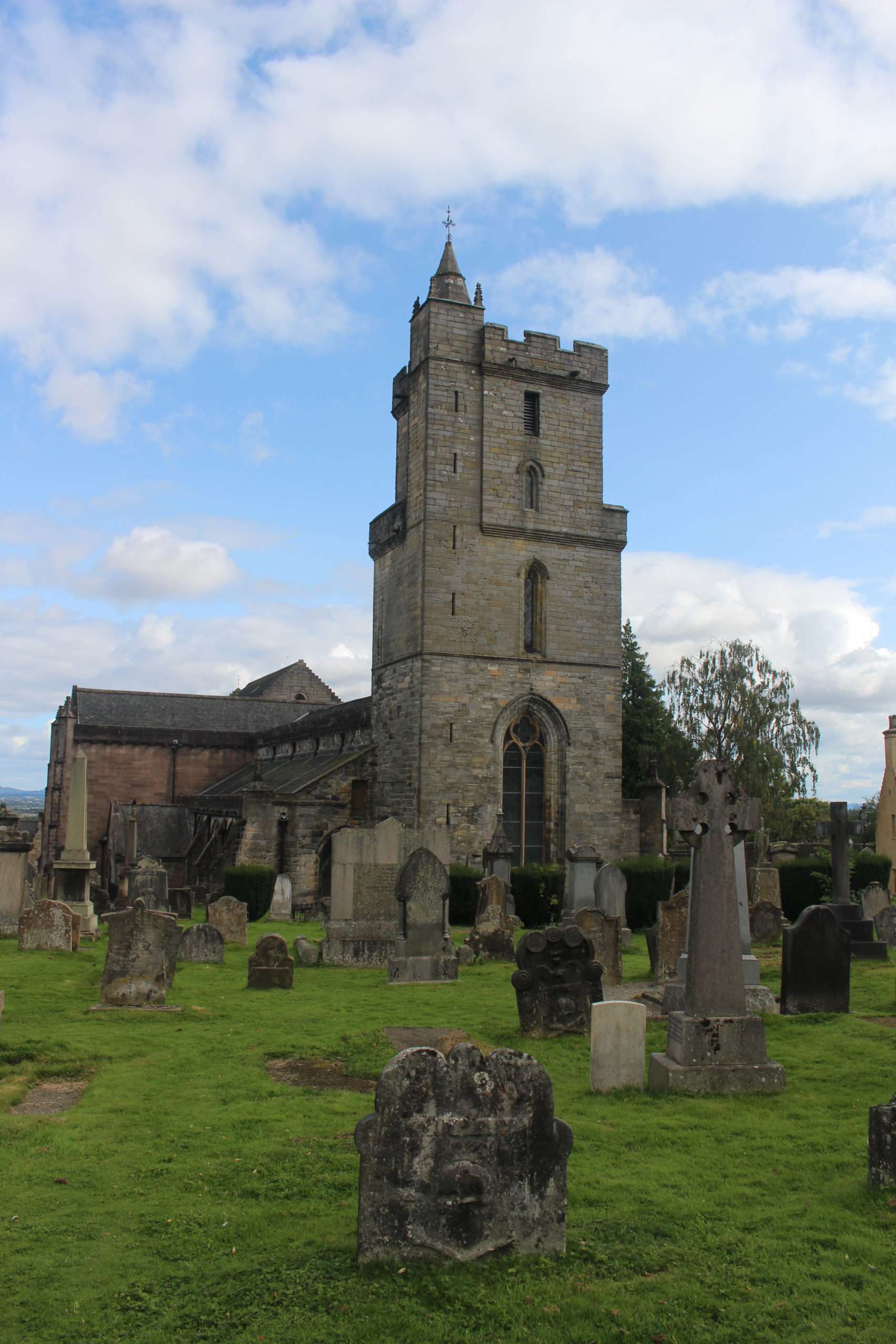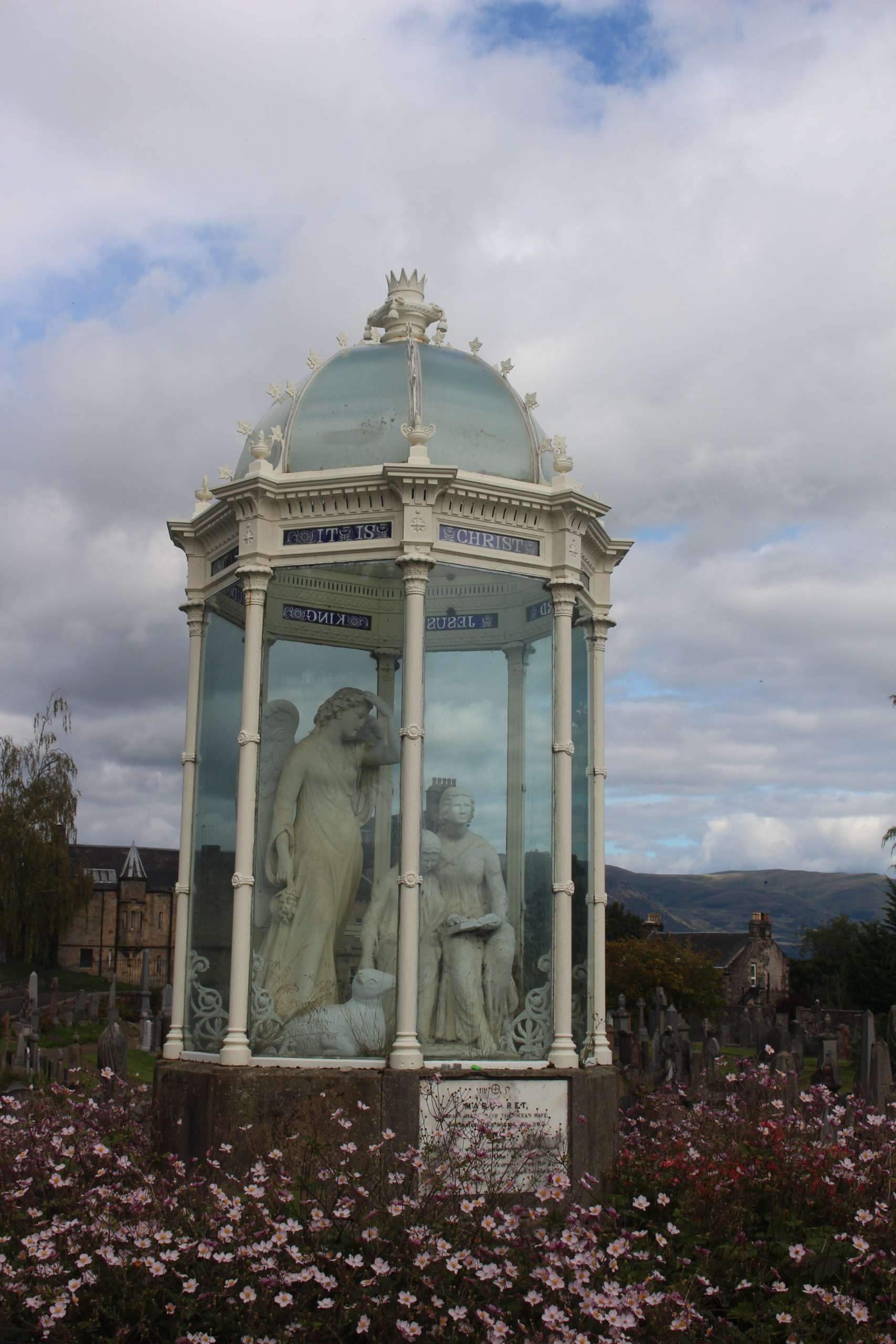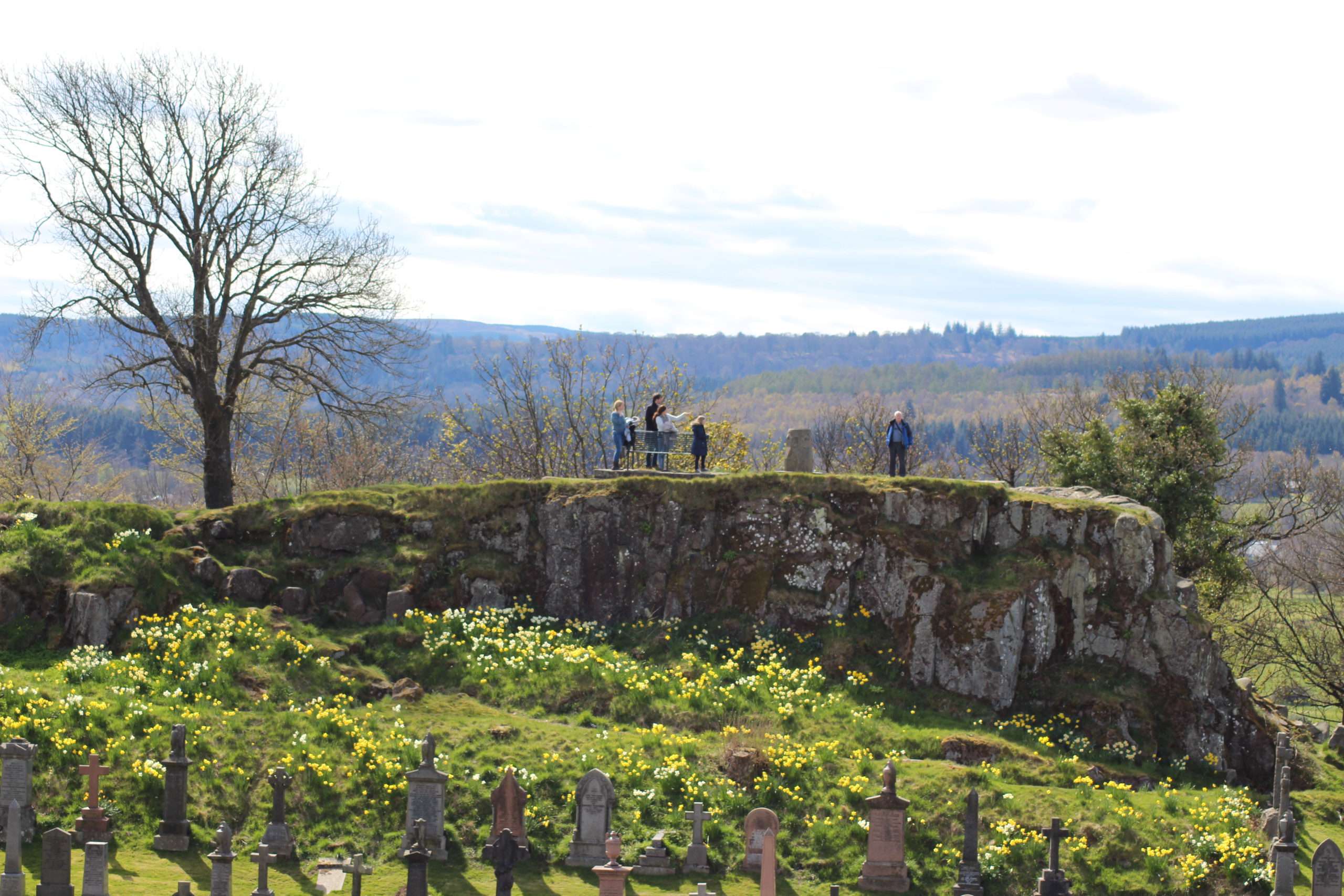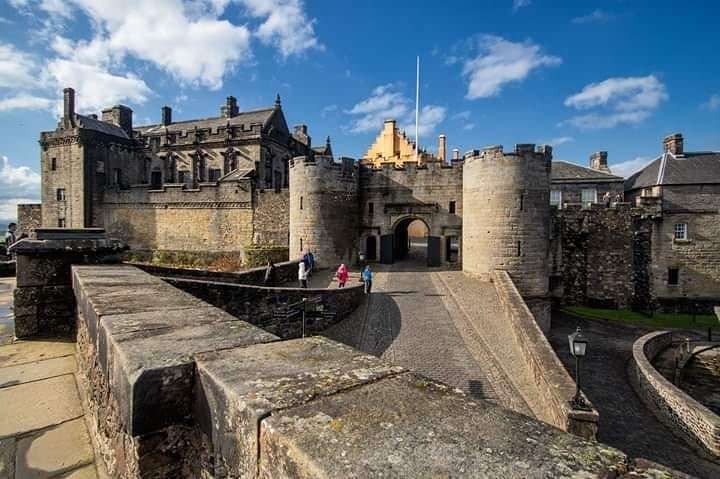Stirling is one of Scotland’s top historic centres and created as a Royal Burgh in 1124. The city is dominated by the imposing Stirling Castle, perched high above the streets filled with Scottish history. Below the castle however the visitor will find historic gems around every corner, as David McVey explains.
Stirling Castle is generally pretty busy. No wonder; it’s one of Scotland’s world-class tourist destinations and a visit there is something you will not forget. Stirling’s historic quarter, leading down to the city centre from the Castle, is full of other historic surprises and delights. Two parallel streets, Spittal Street which becomes St John Street, and Baker Street which becomes Broad Street, climb the hill and join to form Castle Wynd, the final approach to the Castle. This, if you like, is Stirling’s Royal Mile. But except for the Castle itself, there are no crowds like those in Edinburgh.
Holy Rude

The Castle’s best-known near-neighbour is the historic Church of the Holy Rude. ‘Rude’ is an old word for ‘cross’, ‘Holy Rude’ being the same as ‘Holyrood’ in Edinburgh. Much of the church’s interior is now Victorian, including almost all of the stained glass, but the building dates back 600 years. It was one of the earliest churches in Scotland to embrace the Reformation and is now the only surviving church in the United Kingdom, besides Westminster Abbey, to have hosted to a coronation – the infant James VI in 1567. There’s a memorial in the church to John Cowane, a wealthy merchant who died in 1633; his grave is in the old kirkyard outside. He left a legacy for the building of an almshouse, Cowane’s Hospital, for elderly merchants. The building is still there, across Mar Place from the kirk.
A trust was formed with Cowane’s legacy in 1637 and construction of the hospital began then. Originally it provided accommodation for 12 ailing merchants but has since served a number of uses. In the Victorian era it became the home of Stirling’s Guild of Merchants and the breathtaking interior dates from then. The building has recently been subject to a two-year refurbishment. The exterior is pretty much as it was when built, with Biblical texts, a belltower and a painted statue of John Cowane that was added in 1650. The statue is said to jump down from the tower and dance a jig at Hogmanay! Cowane’s Trust still exists nearly 400 years on (it’s the second-oldest charitable trust in Scotland) and still funds charitable work in the town.
Outside the building is a bowling green that dates from 1712, Scotland’s oldest. In the gardens are two large cannon with a story to tell. They were forged in the Carron Works, just down the road near Falkirk, and were sold to the Russian navy. They were captured by the British during the Crimean War, returned home, and have been at Cowane’s Hospital since 1857. The building is free to visit. For considerably more you can hire it for events. A small takeaway café operates from the building during opening hours. However, Cowane’s Hospital isn’t the only repurposed historic building in this part of town.
Old Jail
Further down St John Street is Stirling’s Old Town Jail. From 1847 this was indeed the town’s prison and is now a popular visitor attraction. The jail replaced the confinement facilities in the Tolbooth, a mostly 18th century building that housed a number of municipal services including courts of law. Since 2000, the tollbooth has also been re-used as an arts and performance venue.
The former Erskine Marykirk church is next door to the Old Jail. This church’s origins are in the 18th century when the splendidly-named Revd Ebenezer Erskine led a secession from the established kirk. Stirling Youth Hostel now occupies the footprint of the 1826 church building but its impressive façade has been retained. In the grounds is an 1859 monument to Ebenezer Erskine.
More repurposing. The Portcullis Hotel, at the foot of the Castle Esplanade, is popular with castle visitors. The building dates from 1787 and was originally the town’s grammar school. It was replaced in 1856 by Stirling High School in nearby Spittal Street. In turn, this school moved to new buildings in 1962 and the old High School now serves as the Stirling Highland Hotel. A remarkable feature of the school was its astronomical observatory, gifted by future Prime Minister Sir Henry Campbell-Bannerman in 1889. It is still in working order, giving the hotel a possibly unique selling point.
The Valley Cemetery

Adjacent to the Holy Rude kirkyard is The Valley Cemetery. The Valley is the dip between the Castle Rock and the church, and it’s possible that this was the setting for tournaments and jousting in Stirling Castle’s heyday. In the centre is a natural outcrop known as Ladies’ Rock, the spot from which, supposedly, ladies could watch the fun and games. Scott describes it in Waverley: Waverley could not have failed to admire the mixture of romance and beauty which renders interesting the scene through which he was passing – the field which had been the scene of the tournaments of old – the rock from which the ladies beheld the contest, while each made vows for the success of some favourite knight. It’s still a great spot.
The cemetery was opened here in 1858, the brainchild of William Drummond, ‘seedsman and evangelist’. It is laid out very differently from the higgledy-piggledy kirkyard with broad avenues allowing carriage access to every grave. The cemetery was designed as an improving and instructing experience, with statues of Reformation heroes and heroines, including John Knox and Andrew Melville. There is a striking memorial, encased in glass, to Margaret Wilson and Margaret McLachlan, the Wigtown Martyrs. They refused to acknowledge James VII as head of the Church of Scotland and were executed by being tied to stakes as the Solway Firth tides approached, even though a reprieve had been issued.
Adding to the instructive impact of the Valley cemetery, across a narrow lane is the Drummond Pleasure Ground, which was developed between 1862 and 1863. Drummond intended this as a green and pleasant location for people to stroll on Sundays while ingesting symbolic truths about their faith. Its focus is the bizarre Star Pyramid, a monument to the Covenanting martyrs designed by William Barclay for Drummond. Drummond intended the Pleasure Ground to be separate from the Valley Cemetery, a place for pleasant learning and reflection, not a burial place. As it turns out, there is a burial there, just one, Drummond himself. He died in 1888.
Stirling’s history

I think it would be possible to spend an entire day taking in Stirling’s history without going near Stirling Castle. Of course, that would be absurd; the castle is unmissable. And, in normal times, your entry to the Castle also includes a guided tour of Argyll’s Lodging on Castle Wynd. Begun in the 1500s, it is an impressive townhouse with a complicated history of rebuilding and repurposing. By the 1670s it was occupied by the 9th Earl of Argyll, hence the name. In the 20th century became the town’s Youth Hostel. It came into the care of Historic Environment Scotland when the Scottish Youth Hostels Association took over Erskine Marykirk Church. At the time of my most recent visit Argyll’s Lodging was undergoing maintenance work. Check online for likely reopening dates to avoid disappointment.
It’s home to a fantastic castle, but so much more than that. Spend some time in Stirling’s Royal Mile.
Main photo: Stirling Castle. Photo: VisitScotland.

